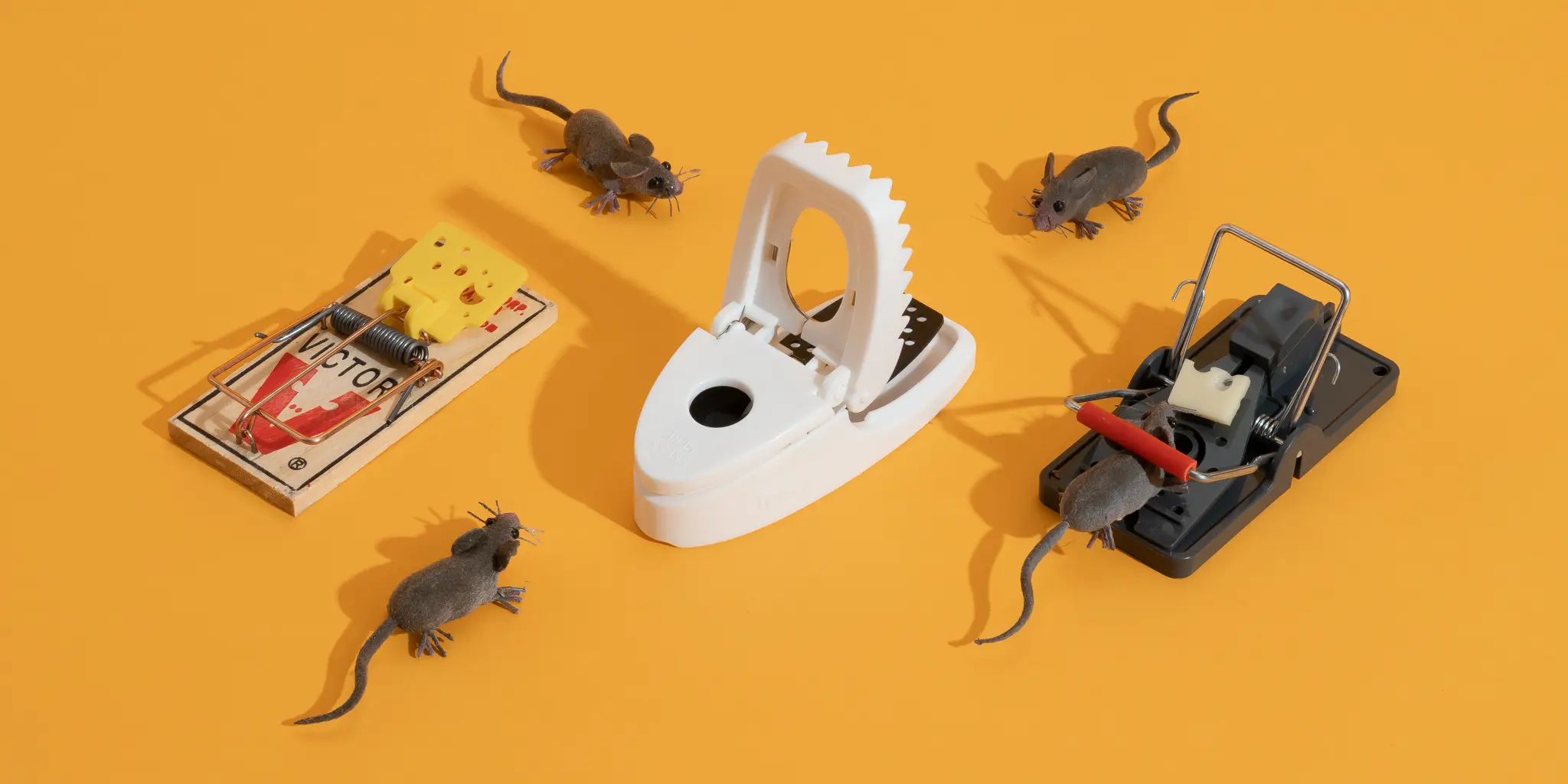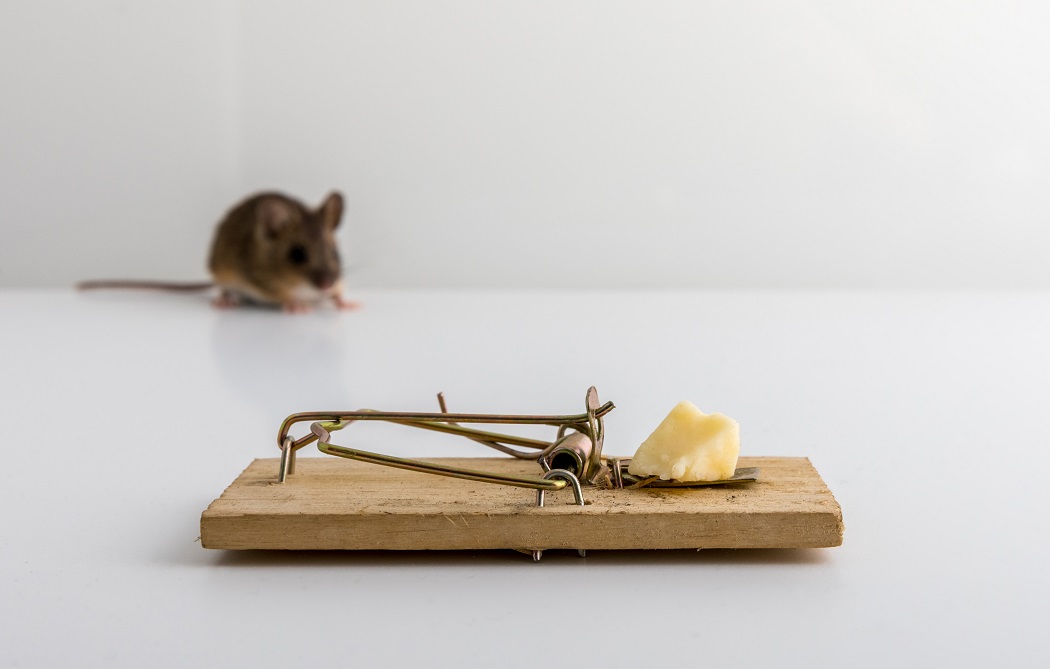Rodents invade homes, warehouses, and offices searching for food, warmth, and nesting space. Traps remain one of the safest and most reliable solutions for quick control. Yet, traps only succeed when paired with the right bait. The best bait for mouse traps is the one that matches rodent biology, environment, and human safety needs. This guide explains every relevant bait option, application technique, and optimization strategy in detail.

Understanding Mouse Behavior Before Choosing Best Bait For Mouse Traps
Why Mice Respond to Specific Foods
Mice are opportunistic omnivores. They naturally prefer grains, seeds, and nuts but adapt quickly to sugary and fatty foods found indoors. Their sense of smell detects strong aromas faster than their vision. The closer bait mimics calorie-dense survival food, the greater the success rate.
Feeding vs. Nesting Motivation
Food lures work most of the year. Nesting materials become effective during breeding cycles. Offering both options in traps increases the chance of capture when food is abundant in the environment.
Peanut Butter: The Proven Primary Bait
Peanut butter consistently ranks as the most effective bait for mouse traps.
-
Aroma intensity: Oils and proteins release a strong scent detectable across rooms.
-
Texture advantage: Sticky consistency prevents theft and requires licking, ensuring trigger activation.
-
Versatility: Works in snap traps, electronic traps, and live traps.
Usage tip: Apply a pea-sized smear directly onto the trigger plate. Avoid overloading, which allows mice to nibble without triggering.
Chocolate: Sweet Bait with Strong Appeal
Chocolate acts as a high-sugar, high-fat attractant.
-
Compound attraction: Cocoa and sugar stimulate rodent reward pathways.
-
Form variations: Chips, syrup, and spreads all attract mice effectively.
-
Temperature stability: Ideal in cool climates where peanut butter hardens.
Usage tip: Press small chips into peanut butter to combine sticky and sweet elements for dual attraction.
Bacon, Jerky, and Fat Sources
Meat-based baits work well because of protein and fat content.
-
Bacon: Freshly cooked bacon emits a strong aroma.
-
Jerky: Dried meat lasts longer and resists spoilage.
-
Animal fat: Mutton fat and lard provide calorie-rich draws in winter.
Usage tip: Secure with thread or smear grease on trigger plates to prevent quick theft.
Soft Cheese: A Conditional Option
Cheese attracts rodents when used correctly.
-
Soft vs. hard: Soft cheese sticks to surfaces, while hard cheese crumbles.
-
Best practice: Use a smear of cream cheese or spreadable cheese rather than cubes.
-
Combination: Mix with seeds or chocolate for stronger results.
Fruits, Nuts, and Seeds
Natural foods replicate a mouse’s wild diet.
-
Dried fruits: Raisins, cranberries, and figs retain sweetness and scent.
-
Nutmeats: Almonds, walnuts, and hazelnuts mimic seed diets.
-
Seeds: Sunflower seeds and grains appeal to foraging instincts.
Usage tip: Tie dried fruit or nuts to trigger plates with dental floss for secure placement.
Nesting Materials as Non Food Bait
Nesting drives motivate mice as strongly as hunger.
-
Cotton balls: Lightweight and soft, perfect for nests.
-
Yarn and floss: Thin strands that can be tugged easily.
-
Feathers: Lightweight attractants used during breeding.
Usage tip: Twist cotton around the trigger plate. Mice pulling fibers trigger the trap instantly.
Best Baits for Mouse Traps
| Bait Type | Attraction Strength | Durability | Ideal Use Case | Placement Tip |
|---|---|---|---|---|
| Peanut Butter | Very High | Moderate | Universal, first choice | Smear pea-sized portion on trigger |
| Chocolate | High | Moderate | Cold rooms, sweet preference | Combine with peanut butter |
| Bacon/Jerky | High | Long | Winter, protein lure | Tie or press firmly on plate |
| Soft Cheese | Medium | Short | Alternate bait, combined use | Smear instead of cube |
| Dried Fruit | High | Long | Storage areas, pantries | Secure with thread |
| Seeds/Nuts | High | Moderate | Natural diet mimic | Tie to trigger with floss |
| Cotton/Yarn | Non-food, seasonal | Very Long | Nesting periods | Wrap around trigger arm |
Correct Baiting Technique
Portion Control
Small quantities force rodents into closer contact. A pea-sized amount works better than large chunks. Large bait allows cautious nibbling without activation.
Secure Attachment
Always secure non-sticky baits using floss, glue, or wire. Sticky baits naturally resist theft but still need careful placement.
Refresh Frequency
Replace bait every 48 hours. Stale food loses aroma. Dried fruit and jerky last longer but require inspection.
Placement of Traps with Bait
Wall and Corner Strategy
Mice travel along walls. Set traps perpendicular to walls with the bait end facing the wall. Place near droppings, rub marks, and food storage zones.
Multi-Trap Setup
Use clusters of traps to increase capture probability. Deploy different baits in the same area to test preferences.
Pre-Baiting
Leave baited but unset traps for one to two nights. This builds trust and eliminates trap shyness.
Seasonal and Environmental Adjustments
-
Winter: High-fat baits like bacon and peanut butter work best.
-
Summer: Sweet baits such as chocolate or fruit perform better.
-
Breeding season: Cotton and yarn outperform food in attracting nesting females.
-
Cold garages: Jerky and chocolate maintain aroma longer than hardened spreads.
Hygiene and Safety Practices
-
Use gloves: Prevent human scent transfer and disease risk.
-
Child and pet safety: Place traps inside tamper-resistant stations when necessary.
-
Clean surfaces: Remove competing food sources to force bait reliance.
-
Disposal: Follow regional laws for humane disposal and rodent waste handling.
Quick Reference
Top 5 Food Baits for Mice:
-
Peanut Butter
-
Chocolate (chips or spreads)
-
Bacon or Jerky
-
Soft Cheese
-
Dried Fruit
Top 5 Non Food Baits for Mice:
-
Cotton Balls
-
Yarn Strands
-
Dental Floss
-
Twine Pieces
-
Small Feathers
Advanced Strategies for Higher Capture Rates
-
Mix baits: Peanut butter plus oats or chocolate chips increases attraction.
-
Trail crumbs: Leave tiny crumbs leading into live traps.
-
Dual motivation traps: Pair food with nesting materials on adjacent traps.
-
Rotation method: Alternate bait types weekly to maintain curiosity.
-
Environmental baiting: Use seeds in barns, chocolate in kitchens, and cotton in attics.
FAQs
Q1. What bait prevents mice from stealing food without triggering the trap?
Sticky spreads like peanut butter or hazelnut spread prevent theft because they require licking.
Q2. Which bait works best for live traps?
Seeds and cotton balls work effectively in live traps since mice enter fully to collect them.
Q3. Can spoiled food be used as bait?
Spoiled bait loses scent and may repel rodents. Fresh, high-aroma bait is always superior.
Q4. How does nesting material outperform food in some cases?
During breeding, female mice prioritize nesting supplies over food, making cotton or yarn more effective.
Q5. What bait is most resistant to cold temperatures?
Jerky and chocolate maintain aroma release longer than hardened peanut butter in unheated environments.
Q6. Is it necessary to mix different baits?
Combining baits increases the range of appeal, ensuring success when preferences are unclear.
Q7. Do mice avoid traps if they sense human scent?
Yes, handling bait with bare hands may reduce effectiveness. Gloves eliminate contamination.
Learn More: Date Ideas Near Me: The Ultimate Guide to Creative, Fun, and Romantic Experiences
Are Real Estate Agents Liable for Bad Tenants?
Conclusion
The best bait for mouse traps is not a single substance but a strategy combining aroma strength, texture, and behavioral triggers. Peanut butter remains the universal leader, while chocolate, bacon, cheese, dried fruit, and nuts deliver strong alternatives. Nesting materials such as cotton and yarn add a powerful seasonal option. Correct placement, small portions, and frequent refreshes maximize effectiveness. Hygiene, safety, and ethical considerations complete the strategy for successful rodent management.

